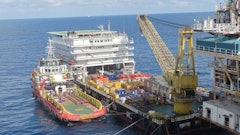
RXO released the latest update to its proprietary Curve truckload market forecast, indicating a sustained year-over-year increase in truckload rates in the third quarter.
“The trends we’ve been seeing for much of the past two years continued in the third quarter, including muted freight volumes, waning carrier capacity, and low spot rates that haven’t been able to sustain any significant upward momentum,” says Corey Klujsza, VP of pricing and procurement at RXO.
“The near-term demand picture is consistent with our expectations for a muted peak season. Shippers are still contending with a tremendous amount of uncertainty, including weak consumer demand and lower consumption of goods. On the supply side, carriers are still under significant cost pressure from prolonged low rates, and recent regulations and enforcement are causing an acceleration in capacity exits. The capacity environment is more fragile than at any point over the past two years, and a modest spike in demand and/or the continuation of capacity exits could lead to rate volatility in 2026,” adds Jared Weisfeld, chief strategy officer at RXO.
Key takeaways:
· The rate of this growth decelerated when compared to the second quarter, however, marking the third consecutive quarter of deceleration.
· Spot rates increased 1.8% year-over-year in the third quarter of 2025, down from the 6.5% reading in the second quarter of 2025 and the 9.1% reading in the first quarter of 2025.
· Peak season shipping could drive some incremental rate volatility, however, it’s likely that freight volumes will remain muted.
· Carriers are under immense cost pressure, and capacity continues to leave the market, which may lead to freight rate volatility when demand recovers.



















